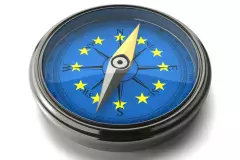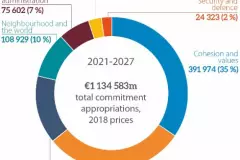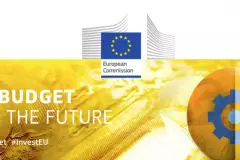Best Practice-Projects
„...projects that have been particularly well managed and can act as a source of inspiration for others.”
(Source: European Commission)
When working in the field of education on the topic of EU funding and EU projects, very often participants demand to see examples of good practice ("good practice examples"), they would like to know how other institutions have applied for and implemented their projects and what good projects actually look like. In addition, the majority of application forms explicitly ask whether other EU-funded projects have been looked at in order to elaborate and define one's own "unique selling point".
But how exactly do such "Best Practice" projects look like and how can they be identified? There are certain criteria for orientation, which we will elaborate on in this article.
Informal Criteria
Informal criteria and expertise usually comes from other organisation and its employees´ experience. They have been established in the field of EU projects for a long time and are happy to share their knowledge. By working with different organisations all over Europe, they have developed a feeling for identifying particularly good applications and projects based on certain criteria (target group, reach, products, effects, etc.). "Best Practice" projects are selected by these organisations and presented as such.
Formal Criteria
Depending on the funding programmes, there are certain formal criteria that have to be met for projects to be evaluated as "examples of good practice” and/or "success stories". In the Erasmus+ funding programme, for example, these criteria are defined either by the national agencies or by the European Commission and the projects are awarded accordingly.
The following criteria are crucial in the selection of "best practice" projects:
- Impact / effect
- Transferability
- Innovation
- Sustainability
- Communication
- Financial management
“Success stories” on the other hand are selected by the Directorate General for Education, Youth, Sports and Culture. They are selected examples of good practice that have distinguished themselves through their impact, contribution to policy-making, innovative results or creative approaches.
These "examples of good practice" and "success stories" can be found on the Erasmus+ Project Results platform.
Quelle: Erasmus+ Project Results Plattform (https://ec.europa.eu/programmes/erasmus-plus/projects_en#search/project/keyword=&matchAllCountries=false)
Websites, Brochures and Platforms
"Best Practice" projects can often be consulted on the websites of the EU Commission, national agencies or national contact points. Some German states, such as Baden-Württemberg, offer a platform for this purpose (https://www.bw-profitiert.de/), which lists "Best Practice" projects sorted according to certain criteria. In addition, you can usually find more information about "Best Practice" projects in handbooks, so-called compendiums, of funded projects or in brochures of the respective funding programmes. These compendiums or brochures contain a selection of projects that have, for example, achieved special effects with the target group or on a European level and are used for dissemination to the general public.
Why are „Best Practice“ Projects so important ?
For applicants, they serve first and foremost as inspiration and orientation. Taking a look at the funding landscape and initiatives that have already received funding is crucial when submitting an application. The following questions help to make efficient use of the "Best Practice" examples and to incorporate them into your own work.
- What has been implemented and created particularly well?
- How was the project received by the target group(s), what impact did it have on them?
- Can you build on these "Best Practice" projects, or add something new?
- Can synergies be created between these projects and your own project? If so, how?
- How can one differentiate oneself from these funded projects? What do they offer? What does your own project offer?
Souece: https://www.culturepartnership.eu/en/article/10-successful-ce-projects
In conclusion, organisations that have already coordinated and implemented "Best Practice" examples have a good reputation ahead of them, especially among grant administrators (EU) and project partners. For this reason, they are more often involved in projects and can build their networks and project portfolios more broadly. By analysing and evaluating "Best Practice" projects, an exchange of knowledge between experienced project applicants and newcomers can take place in order to pass on expertise to new generations.








